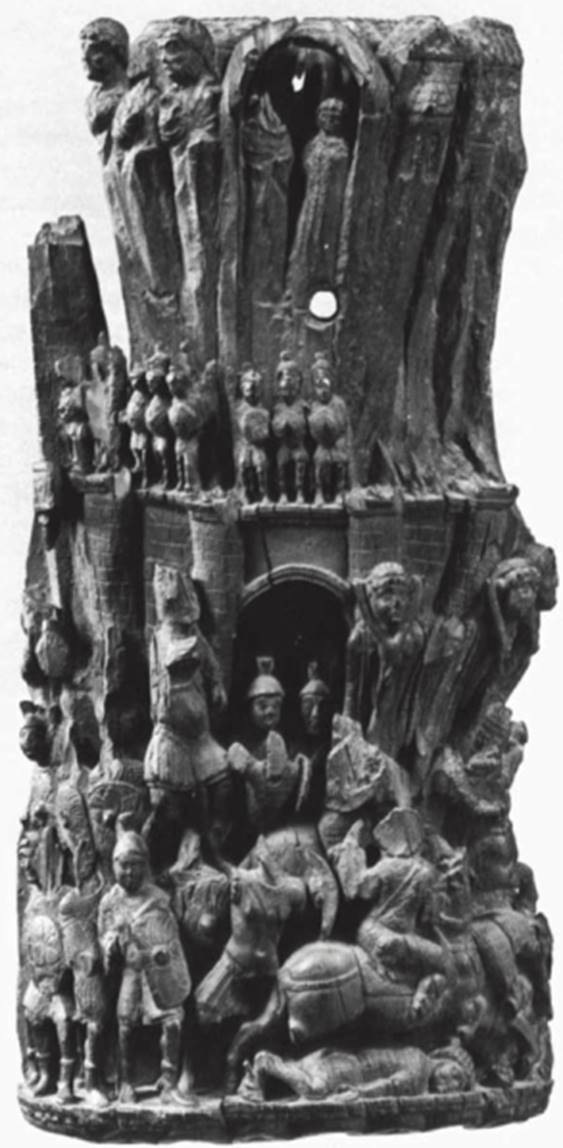Relief with liberation of a besieged city. El Ashmunein (?), Egypt, 4th-5th century Dark wood (dikotyle)
The relief depicts the liberation of a walled city, besieged by barbarians who have been routed by a relieving force of Roman infantry coming from the left, possibly under the direction of the tall figure to the left of the city gate; one of the soldiers bears the labarum. The barbarians on horseback are being driven off or killed; their leaders, marked by princely diadems, hang on forked stakes outside the city wall at the right. Troops of the defending garrison line the top of the wall and behind them rise the buildings of the city, and on the left appear three damaged figures in heroic scale, perhaps protective saints.

Although the relief is well preserved, with the upper and lower frames intact, it is unlikely that this piece stood alone but, rather, was probably fixed to a wall as decoration with other similar reliefs, now lost. Since it has a simple decoration on the bottom, it was probably the lowest element in some assemblage.
The subject of the relief follows a familiar theme in Roman imperial art going back at least to Trajan's column in Rome, often similarly represented in stark, explicit terms. Comparable panels filled with historical reliefs have been found on the piers of the triumphal arch of Septimius Severus in Leptis Magna, a.d. 203/205, and this wooden relief may itself refer to some specific event, possibly the invasion of a Libyan tribe, the Blemyes, into the Delta, who were then defeated by the Christian armies of the empire. It has been suggested, however, that the subject is biblical and represents the rescue of Gibeon by Joshua (Josh. 10), who defeated the five kings of the Amorites and hung their bodies on trees. If so, the relief would provide another instance of a Roman model derived from the rich tradition of narrative monuments and applied to a biblical theme.
Dating of the work is complicated by the lack of exact parallels and the distance from metropolitan centers, although comparisons can be made with the late fourth-century sarcophagus in S. Ambrogio, Milan, with the early fifth-century mosaics in Sta. Maria Maggiore, Rome (no. 420), and with several of the illuminations in the Ilias Ambrosiana (no. 193). Although the formal tradition had its origin in Roman art of the late third to fourth century; the variations in scale, the mixture of precisely defined elements ; in a very compressed space, and the manipulation of the architectural background indicate a date of about 400. Acquired in 1900. bibliography : Schlunk, 1939, no. 179; Beckwith, 1963, no. 46; Vienna, 1964, no. 129.
Date added: 2025-07-10; views: 196;
